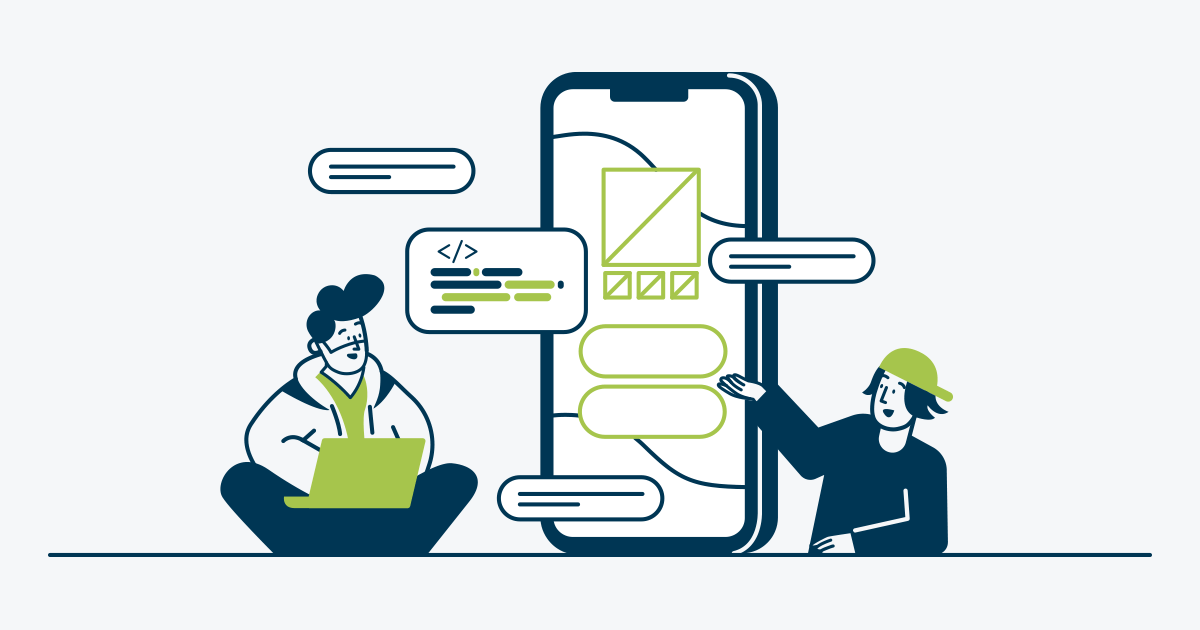Let’s quickly distinguish between UI and UX. UI is the user interface where humans interact with products. UX is the emotional outcome users experience after interacting with a product. Now that we’ve clarified the difference let’s look at some UI and UX design principles.
Start with the end
It doesn’t matter what you write, design, invent or dream up in this world. If you don’t have the end-user in mind, you’re wasting your time. What does the user want and/or need? Why would they use your product, and which problem does it solve? You should be asking these questions during a user research process. You’ll hopefully have insight into your user’s needs afterwards. Only then can you start designing. Remember. Features are not benefits. Focus on benefits!
Another word of advice. You’re not the user. Don’t assume that users will use interfaces like you do because they don’t. Base any design principles on solid research. That means exposing relevant people to your product and tracking what they do. It’s called usability testing, and it will distinguish between what you think users do and what they actually do.
Too much information
Gone are the days of wading through Tolstoy’s War and Peace for relaxation. A study conducted by Microsoft (who else) found that the attention span of humans has decreased from 12 to 8 Hollywood seconds. It means that your goldfish can focus on something for longer than you can. So when you design, think fish. It might sound simple enough, but have you ever tried catching one? The point we’re trying to make is to keep things simple. Only keep what is totally necessary. All the information you use should be relevant and valuable. You wouldn’t try catching a fish with a bicycle, would you?
One size does not fit all
UX design is not universal. The design process required by one product could be universes apart from another. Each project is unique and has its own needs. That means designers have to adapt their design processes to the requirements of a project. If you’re designing a new product, you might need to spend more time researching and clarifying all the requirements. Redesigning a product will conversely require that you spend time on A/B testing and analytics.
Build it to break it
Before you get a bunch of engineers working through the night to finish your product, best you prototype it first. Build it, break it and build better. Without a prototype, you won’t know what is feasible and what isn’t. Rapid prototyping will help you create a product quickly. You can then validate it with a group of users before setting the engineers free on it.
Don’t fake content
Lorem ipsum and placeholders where images should be don’t cut it when you need to see how users use an app or website. Work with actual content. Be it copy, design or functionality. It will give you the opportunity to see your work as a whole, not just parts of something that will look a certain way one day.
Simplicity and consistency rules
Great user interfaces are simple and consistent. They make it easy to interact with the product. One doesn’t need to consult a map to figure out how to read a map. It should be intuitive. The same applies to design. Use the Principle of Least Astonishment to subtly guide users to where they need to go.
Form follows function
We all like beautiful things. This human trait is enhanced in designers who often lose sight of usability to serve aesthetics. Of course, we don’t want to design ugly things. But always keep in mind that everything should be there for a reason. To perform a function. If it doesn’t, it should go. And yes, make it pretty by all means. But make sure it works for the reason it was created first.
Speaking of elegant solutions. Why don’t you connect with Truevo if you’re in the market for a payment solution that works? Our UI and UX teams conduct regular A/B testing to create a functional, elegant, and beautiful solution that answers all your needs. We can’t wait to make magic with you.



